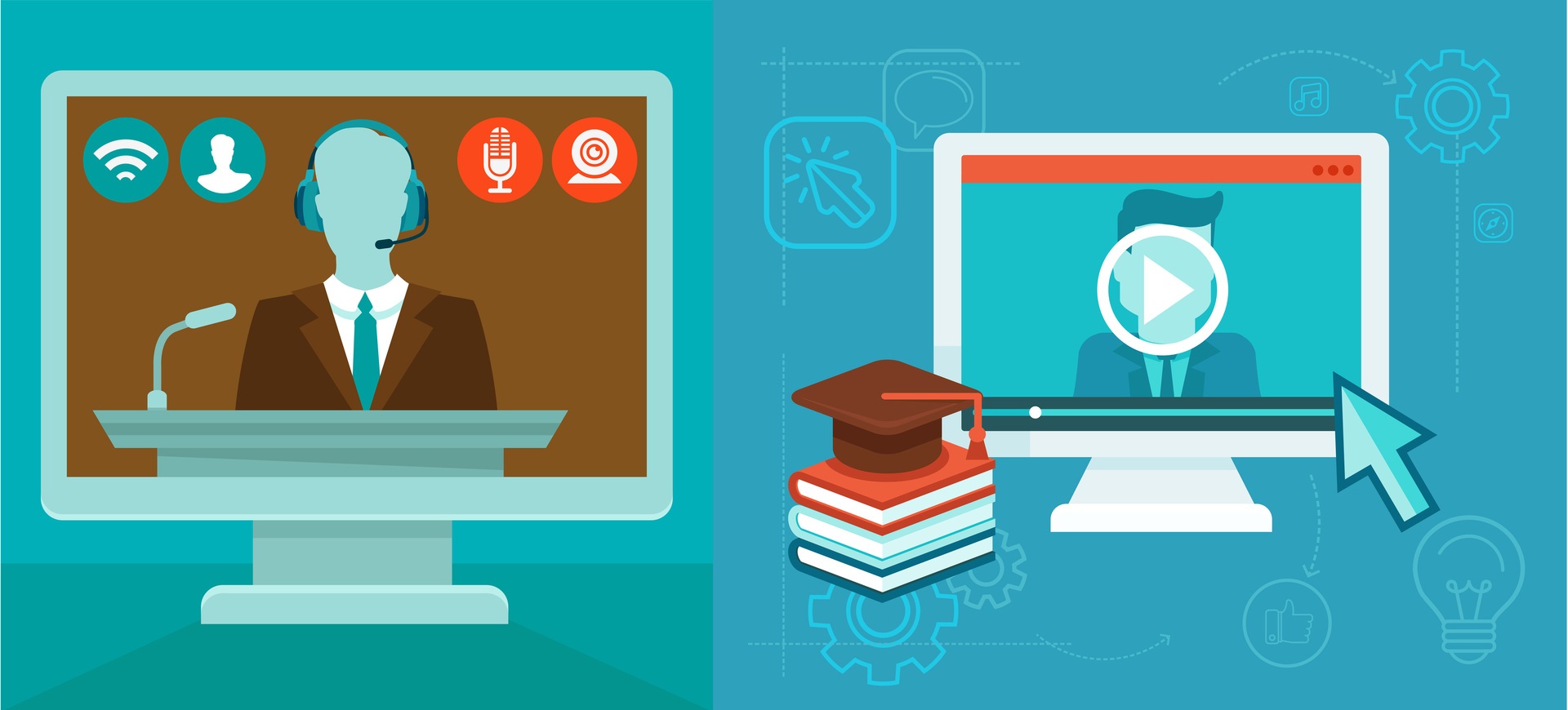How To Use Google Hangouts For Synchronous Learning
Synchronous learning used to be strictly for traditional classroom environments and on-site training. However, thanks to eLearning software, learners can be fully engaged in the learning process even if they happen to be on the other side of the globe. Synchronous learning can take place in immersive and exciting eLearning environments, wherein learners are able to interact with their peers and receive immediate instructor-led training.
Finding affordable and user-friendly ways to create a fun and powerful eLearning experience for learners in real-time used to be one of the key challenges of synchronous learning. But this is no longer the case. With Google Hangouts eLearning professionals can develop and implement synchronous learning strategies, making it an ideal tool for eLearning professionals of all skill levels in all niches.
- Integrate live class discussions into your eLearning course.
Google Hangouts make it easy for you to hold lively class discussions and interact with your learners in an engaging and immersive online environment. In fact, you can make them a part of your lesson plan in order to transform an asynchronous self-paced course into a blended learning course, or convert a lecture into a live class debate to motivate your learners and give them the opportunity to ask questions and offer feedback. Learners can type in comments during the hangout that you can verbally respond to, or even communicate with one another. - Develop collaboration exercises.
Google Hangouts also give eLearning professionals the option to have group video calls. So, why not design activities and exercises on Google Hangouts? For example, you can ask your learners to collaborate on a project together via Google Hangouts, or engage in real life scenarios in order to give them a better understanding of how the concepts would apply in a real world context. Google Hangouts allow up to ten people to be in a video chat simultaneously, making it easy for learners to get feedback, share ideas, and benefit from one another's experience. Google Hangouts can also be accessed on various mobile devices, so learners can communicate with one another even when they're on the go. - Encourage learners to form online study groups.
Studying in groups is not only more fun and engaging for learners, but it also allows them to retain knowledge more effectively. You can encourage learners to form online study groups where they can meet at a set date and time to talk about assignments, review learned content, and even recap lessons if there happens to be an upcoming assessment. They can also send photos and messages through Google Hangouts, even when other learners aren't online. When the learners do come back online, Google Hangouts will notify them that one of their peers tried to reach them, so that they can set up a time to study together. This particular feature can be especially useful in situations where a learning intervention may be required. For example, if a learner may not be progressing as expected and might need help from a more experienced learner or facilitator. - Invite subject matter experts to offer a virtual presentation.
One of the most exciting things about Google Hangouts for synchronous learning is that it is so versatile. There are so many applications for it in eLearning settings, all of which have the power to enrich the eLearning experience. If subject matters are located halfway around the world, you can invite them to speak to your learners and share their experience and expertise through Google Hangouts. This can save both time and money, thanks to the fact that you won't need to pay for the experts to visit your physical location (i.e. travel expenses and a hotel stay), and you won't have to designate a certain time or date for their presentation well in advance. In a matter of minutes you can connect your learners with a knowledgeable subject matter expert. - Use Google Hangouts for one-on-one learner support.
If you notice that a learner is falling behind or doesn’t comprehend the concepts as quickly as expected, you can offer him/her additional support through Google Hangouts. On the other hand, if a learner is absorbing the knowledge at a rapid pace and may be a good candidate for advanced courses or lessons, you can also offer one-on-one tutoring for him/her as well. This ensures that each of your learners gets a personalized and effective educational experience, and feels as though they are truly benefiting from your course. It's also important to mention that Google Hangouts give you the option to reach a learner on their phone, as well, if they are unable to access Google Hangouts or feel more comfortable having live tutoring sessions without video. - Record lectures or presentations for later viewing.
When learners simply aren't able to attend a live event or can't make it for an online study group, you have the ability to record presentations, discussions, and lectures for later viewing. This means that learners won't have to worry about missing out on important lessons or chats, and that they can even refer to the recorded chat if they want to improve their comprehension of the subject. You can even schedule live broadcasts to let your learners know if there is an upcoming event that might be of interest to them, and then save it automatically to your YouTube channel.
Looking for additional tips on how to create a synchronous learning strategy?
In the 8 Tips To Create an Effective Synchronous eLearning Strategy article, I'll offer you a step-by-step look at how to create a synchronous learning strategy that is informative, engaging, and interactive. Regardless of whether you are developing a private or corporate eLearning plan and whether you are planning an event, lesson, or course there are certain synchronous learning tips you will need to follow.
If you'd like to learn more about how to develop a successful synchronous learning strategy, the 46 eLearning Tips for Synchronous Learning article features 25 eLearning Tips for Online Course Facilitation, 16 eLearning Tips for Planning a Virtual Classroom Event, and 5 eLearning Tips to Avoid Sucky Virtual Classrooms.







